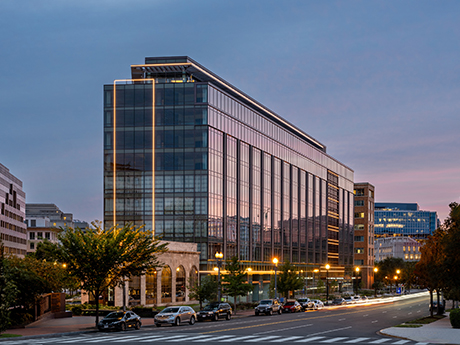By Ashley O’Connor, executive managing director at MGAC
Large-scale mixed-use developments are reshaping urban landscapes, offering opportunities to reimagine cities as more appealing places to live, work and visit.
Unlike traditional single-use developments, these projects blend various real estate verticals — residential, commercial, recreational — into cohesive ecosystems. The versatility of these projects both mitigates risks during economic downturns, such as oversupply in specific sectors, and fosters resilience and adaptability, making them stand out as sustainable investments in an evolving urban environment.

MGAC
Enhancing Visual, Functional Landscapes
The shift away from monolithic single-use buildings has transformed skylines, replacing them with dynamic, multi-purpose structures that blend into their surroundings. These projects often feature green spaces, public art installations and architectural elements that enhance aesthetics and functionality.
For instance, the redevelopment of the Century Plaza Hotel in Los Angeles demonstrates how historical preservation can coexist with modern innovation. Once celebrated for its mid-century design, the property’s transformation added sleek residential towers while maintaining its iconic charm, creating a vibrant hub that reflects the city’s evolving identity.
Similarly, the Etobicoke Civic Center in Toronto illustrates how well-designed mixed-use developments contribute to urban appeal. By combining civic, residential and commercial spaces into a single 800,000-square-foot development, the project emphasizes walkability and accessibility while revitalizing the surrounding area. These features ensure that developments enhance the urban fabric rather than merely occupying space, turning otherwise disjointed areas into cohesive, thriving communities.
Fostering Livable Communities
Mixed-use developments excel at fostering community and improving quality of life by reducing the need for long commutes and promoting walkable neighborhoods. These interconnected environments allow residents to access amenities like grocery stores, restaurants and cultural venues within minutes, creating an appealing lifestyle for diverse demographics.
In Washington, D.C., the renovation of 20 Massachusetts Avenue epitomizes this approach. By transforming a historic building into a mixed-use destination offering commercial, hospitality and retail spaces, the project seamlessly integrates modern conveniences with historical significance. This blend not only enhances community engagement, but also serves as a magnet for young professionals, families and retirees alike.
Attracting a New Generation
Today’s urban residents are drawn to cities that combine convenience, sustainability and vibrant social opportunities. Developments like the Century Plaza Hotel and 20 Massachusetts Avenue cater to these demands by incorporating diverse uses that support flexible lifestyles.
For instance, Century Plaza’s mix of residential, retail and communal spaces aligns with the needs of modern city dwellers, while 20 Massachusetts Avenue’s inclusion of flexible workspaces and hospitality services creates a dynamic environment that appeals to locals and visitors alike. These projects demonstrate how thoughtful design can attract a broad spectrum of residents seeking an integrated urban experience.
Long-Term Benefits, Sustainability
Beyond immediate advantages, mixed-use developments offer lasting benefits to cities and their inhabitants. By increasing property values, fostering social cohesion and promoting sustainability, these projects contribute to the long-term vitality of urban areas.
For example, the Etobicoke Civic Center both revitalizes its neighborhood and prioritizes sustainable practices like energy efficiency and green infrastructure, setting a benchmark for environmentally conscious urban design. Similarly, the incorporation of sustainability in projects like 20 Massachusetts Avenue underscores the real estate industry’s commitment to creating resilient, future-ready environments.
Developers are increasingly prioritizing features such as mass timber construction, energy-efficient systems and rainwater harvesting to meet ambitious environmental goals. These elements align with broader efforts to reduce urban carbon footprints while enhancing livability. By reducing reliance on cars and promoting walkability, mixed-use projects contribute to creating greener, healthier cities, exemplifying how urban planning can meet evolving societal and environmental needs.
A Vision for the Future
As cities evolve, mixed-use developments are poised to play a pivotal role in shaping their future. Whether preserving landmarks like the Century Plaza Hotel, reimagining civic spaces as in Toronto or revitalizing historic properties like 20 Massachusetts Avenue, these projects demonstrate the versatility and potential of integrated design.
In addition, these projects can provide a hedge against economic uncertainty while fostering vibrant, sustainable urban environments that meet the needs of changing populations. In doing so, mixed-use developments chart a promising path for cities striving to become more livable, resilient and connected.


